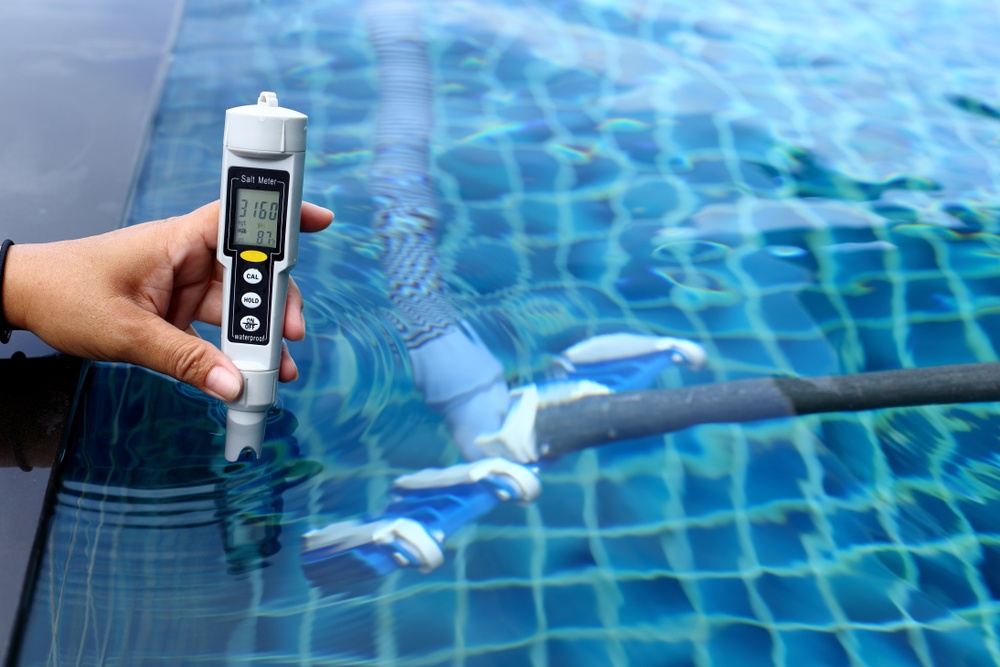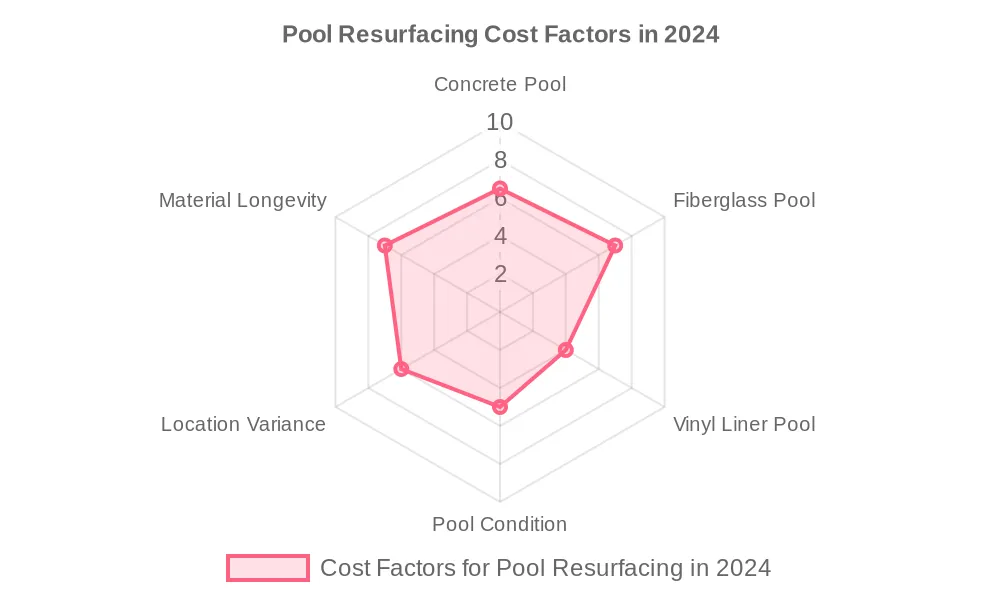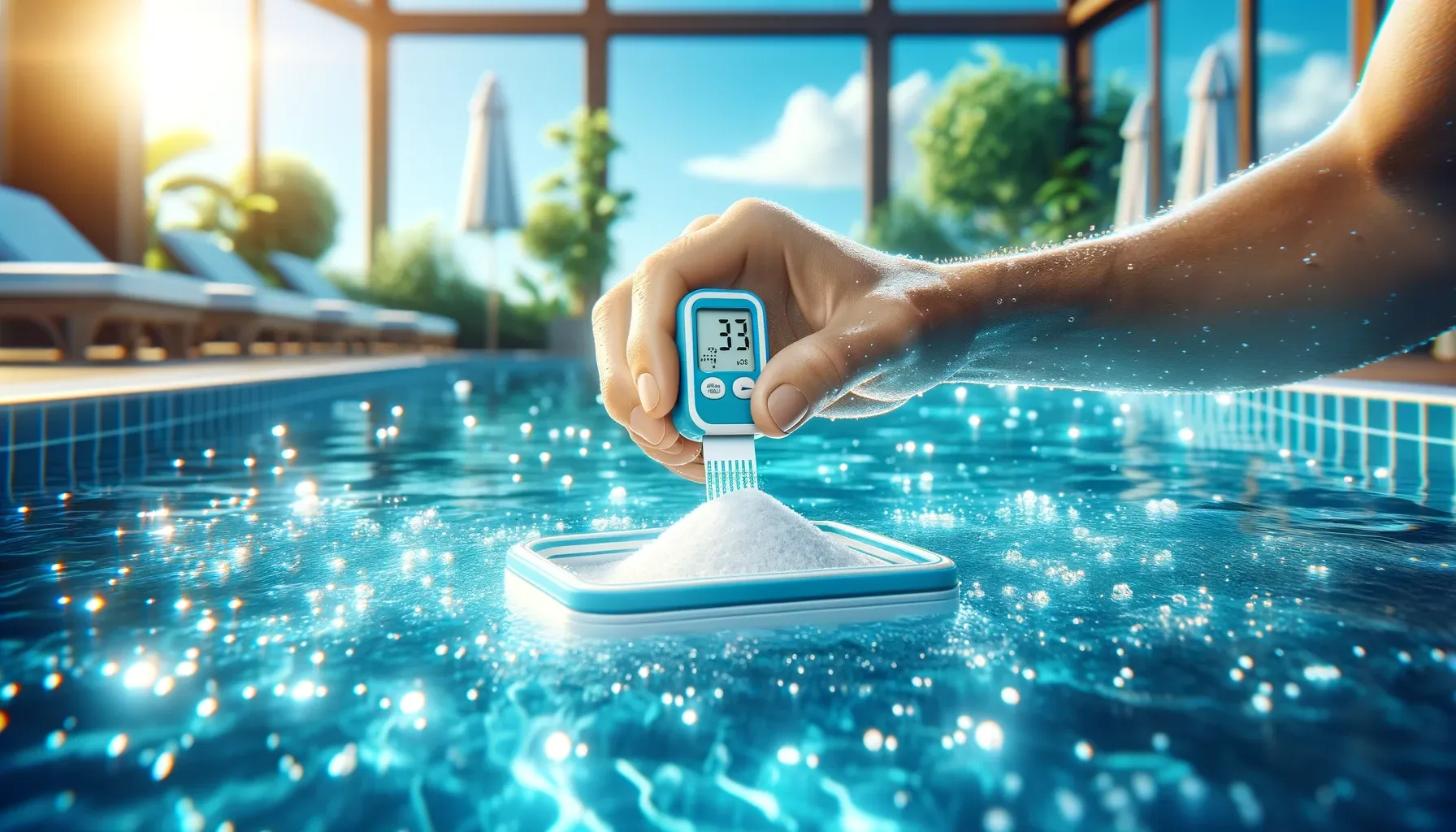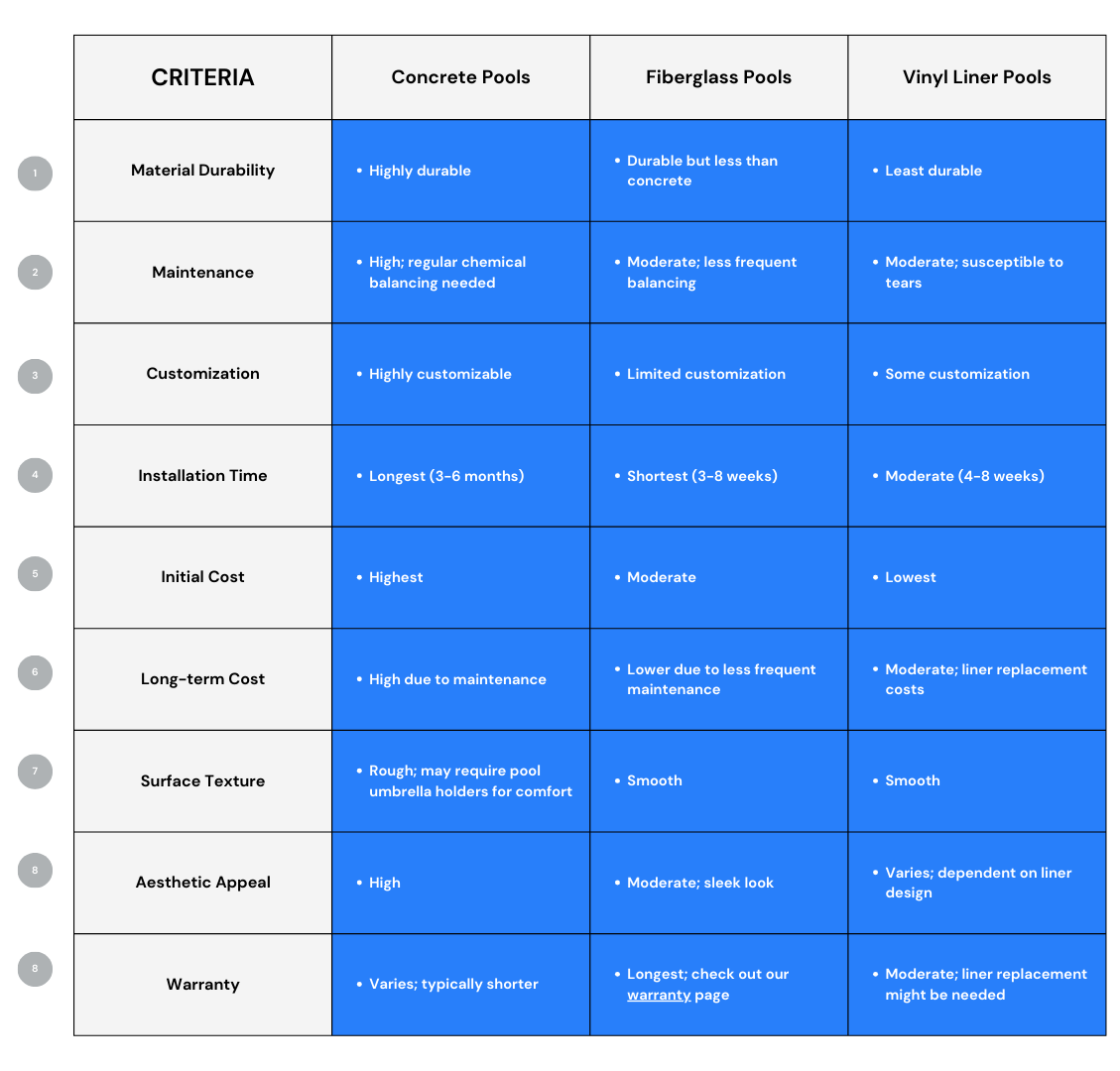
How Much Does Resurfacing A Pool Cost In 2024

As a pool owner in 2024, you’re likely aware that maintaining the beauty and functionality of your pool requires regular upkeep. One crucial aspect of this maintenance is pool resurfacing. This process not only revitalizes the appearance of your pool but also ensures its longevity. In this guide, we will look at what pool resurfacing entails and the cost that is involved, providing you with the information you need to make informed decisions about your pool in 2024.

Latest


How Do You Properly Clean a Fiberglass Pool in 2024?

How Do You Know If Your Pool Needs Salt?
Categories
The Essence of Pool Resurfacing
Pool resurfacing is more than just a cosmetic fix; it’s a restoration process that addresses various issues such as cracks, stains, and leaks. Over time, the surface of your pool undergoes wear and tear due to factors like chemical exposure, weather conditions, and usage. Resurfacing not only rejuvenates your pool’s appearance but also seals minor leaks and prevents further damage.
2024 Trends in Pool Resurfacing Cost
The pool industry continuously evolves, with new resurfacing materials and techniques emerging. In 2024, we see a trend towards eco-friendly and long-lasting materials that promise durability and aesthetic appeal. Whether you opt for plaster, pebble, fiberglass, or aggregate finishes, each comes with its unique benefits and cost implications. The choice of material significantly influences the overall resurfacing cost and the maintenance required in the future.
Decoding the Cost Factors
When it comes to resurfacing a pool in 2024, several factors contribute to the total cost. The size of your pool is the most apparent factor – larger pools require more materials and labor, which naturally increases the cost. The type of resurfacing material you choose also plays a significant role. For instance, basic plaster is usually the most affordable option, while high-end finishes like pebble or tile are at the higher end of the price spectrum.
Your Pool Condition
Another crucial factor is the condition of your existing pool. If your pool requires extensive repair work before resurfacing, this will add to the overall expenses. Moreover, regional variations in labor costs can impact the final price. Pool owners in urban areas might face higher resurfacing costs compared to those in rural regions due to the difference in labor charges.
Budgeting for Different Pool Types
As we venture further into understanding how much resurfacing a pool would cost in 2024, it’s essential to acknowledge that not all pools are created equal. The type of pool you own plays a pivotal role in determining the resurfacing cost. Let’s break down what you can expect for different types of pools.
Concrete Pools: The Classic Choice
Concrete pools are known for their durability and versatility in design. However, they require resurfacing more frequently than other types. In 2024, resurfacing a concrete pool typically costs around $6,500 per 1,000 square feet. This price can fluctuate based on the chosen finish. Plaster finishes are usually more budget-friendly, while options like pebble or tile may increase the cost due to their higher material and labor requirements.
Fiberglass Pools: Longevity and Ease
Fiberglass pools are lauded for their low maintenance and longevity. They don’t need resurfacing as often as concrete pools. When they do, the cost can vary significantly based on the pool’s size and the complexity of the job. On average, fiberglass pool resurfacing might cost slightly higher than concrete due to the specialized materials and skills required.
Vinyl Liner Pools: An Economical Alternative
For those with vinyl liner pools, the resurfacing process is different and often more affordable than concrete or fiberglass pools. Replacing the liner, which essentially counts as resurfacing in this case, can cost considerably less. However, vinyl liners might need replacement more frequently, impacting long-term costs.
Budgeting Tips for Resurfacing Your Pool And Cutting Cost in 2024
When budgeting for pool resurfacing, consider not only the immediate cost but also the long-term implications. Opting for a cheaper resurfacing option might save money upfront but could lead to increased maintenance costs down the line. On the other hand, investing in a high-quality, durable finish could reduce the frequency of resurfacing needed, offering savings over time.
It’s also wise to get multiple quotes from reputable pool resurfacing companies. Prices can vary, and getting different estimates ensures you’re getting a competitive rate. Don’t forget to inquire about warranties and maintenance services, which can offer additional value.
Lastly, consider the timing of your resurfacing project. Off-peak seasons might fetch you better deals as companies are less busy and might offer discounts.

Making Smart Choices in Pool Resurfacing for 2024
In the final stretch of our journey through pool resurfacing in 2024, we turn our focus to the latest innovations in resurfacing materials and the key considerations for making a smart investment in your pool.
Innovations in Resurfacing Materials
The pool resurfacing industry has witnessed significant advancements in materials and techniques. In 2024, eco-friendly and energy-efficient options are in vogue, offering not just aesthetic appeal but also long-term cost savings. For example, new forms of aggregate finishes incorporate recycled glass or natural stones, providing a sustainable yet luxurious look. Innovations in plaster and fiberglass technologies also offer enhanced durability, reducing the frequency of future resurfacing.
It’s important to stay informed about these materials’ long-term performance and maintenance requirements. Some of the cutting-edge materials for resurfacing a pool might have a higher upfront cost but could prove more economical over time due to their longevity and reduced maintenance needs.
Cost vs. Value: The Balancing Act
In evaluating resurfacing options, pool owners must weigh the initial cost against the expected lifespan and maintenance demands of the chosen material. While it might be tempting to go for the most affordable option, consider how the material will stand up to your pool’s usage, local climate, and the chemicals used for maintenance. Sometimes, spending a bit more initially can lead to significant savings in maintenance and longevity.
Working with Professionals
Given the technical nature of pool resurfacing, working with experienced and reputable professionals is crucial. They can provide valuable insights into the best materials and techniques for your specific pool and local climate. Additionally, professional resurfacers can offer warranties and follow-up services, adding an extra layer of security to your investment.
Final Considerations
Before making a final decision, review your pool’s current condition, usage patterns, and your long-term plans. If you foresee changes in your pool usage or plan to renovate your pool area, these factors might influence your resurfacing choices. Also, consider the aesthetic aspect of resurfacing – the finish you choose should complement your pool area’s overall look and feel.
Pool resurfacing in 2024 is an investment in your property’s value and your enjoyment. By understanding the costs involved in resurfacing your pool, evaluating the different materials, and working with skilled professionals, you can ensure that your pool remains a beautiful and functional centerpiece of your home for years to come, regardless of the cost.
Latest

How to Maintain the Recommended Salt level in your Pool in 2024

How Do You Properly Clean a Fiberglass Pool in 2024?

How Do You Know If Your Pool Needs Salt?
Categories
YOU'RE NOT IN THIS ALONE
We are with you every splash of the way
Need a pool fix or looking for an upgrade? We’re just one click away to help with all your pool needs.

